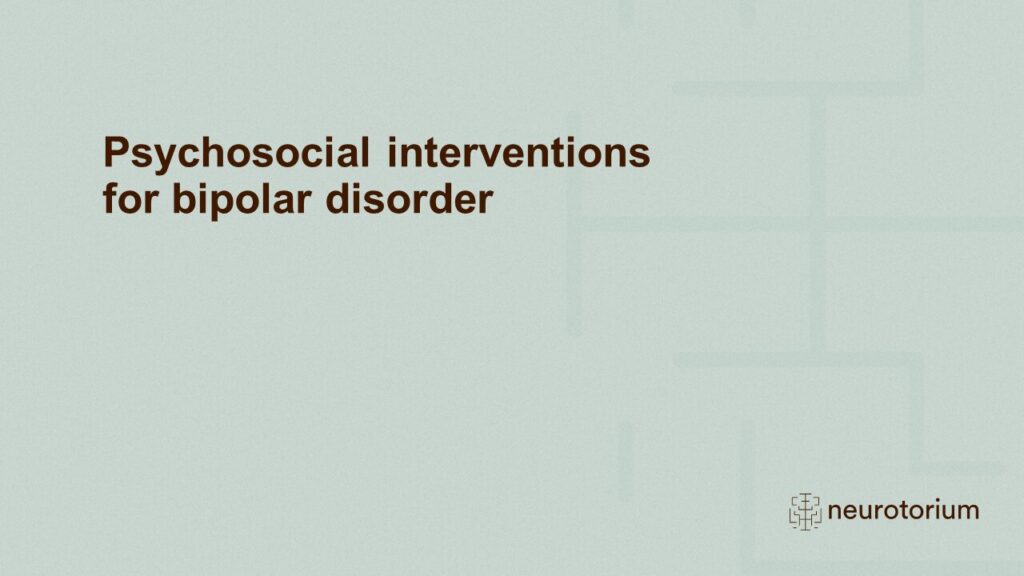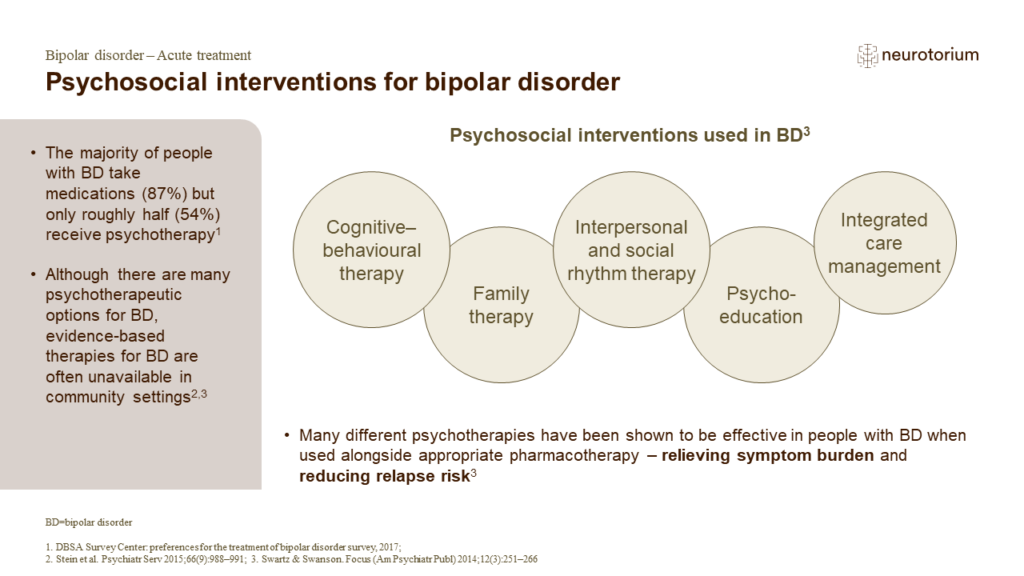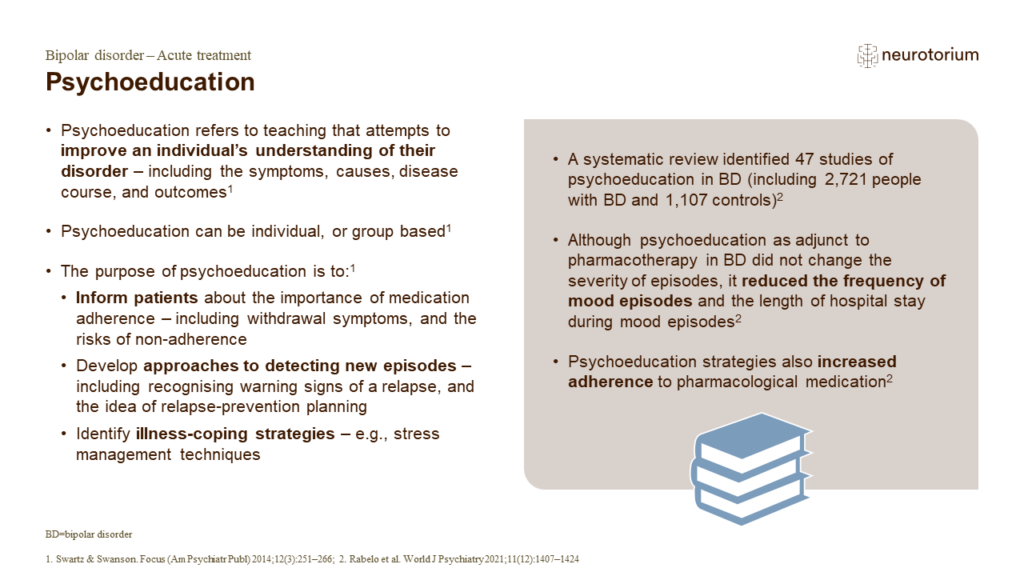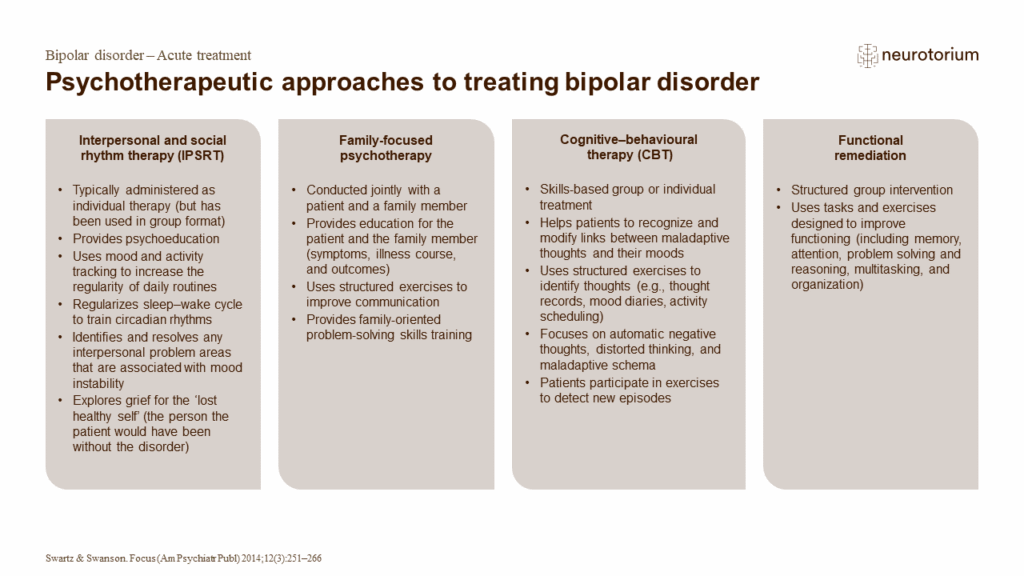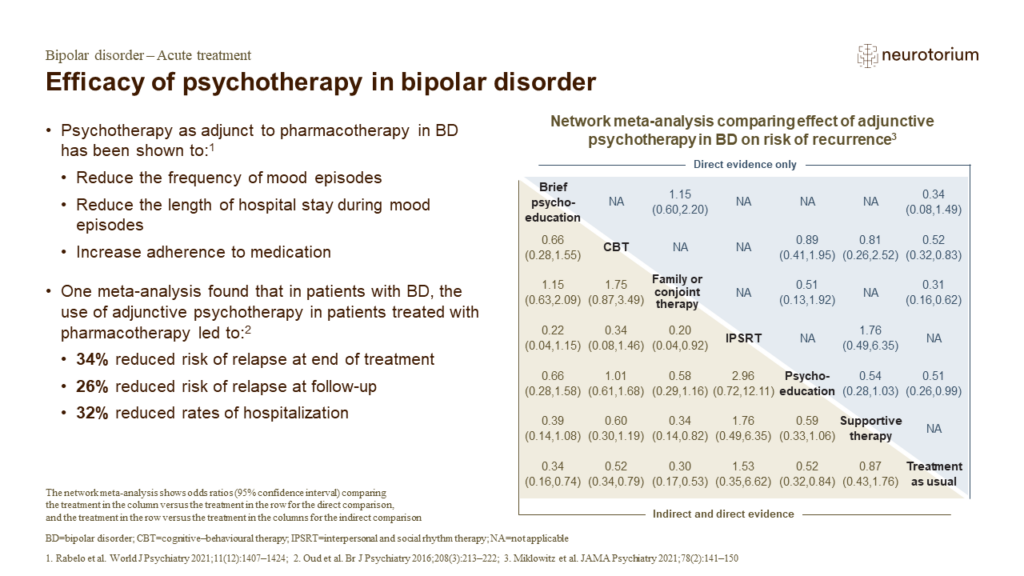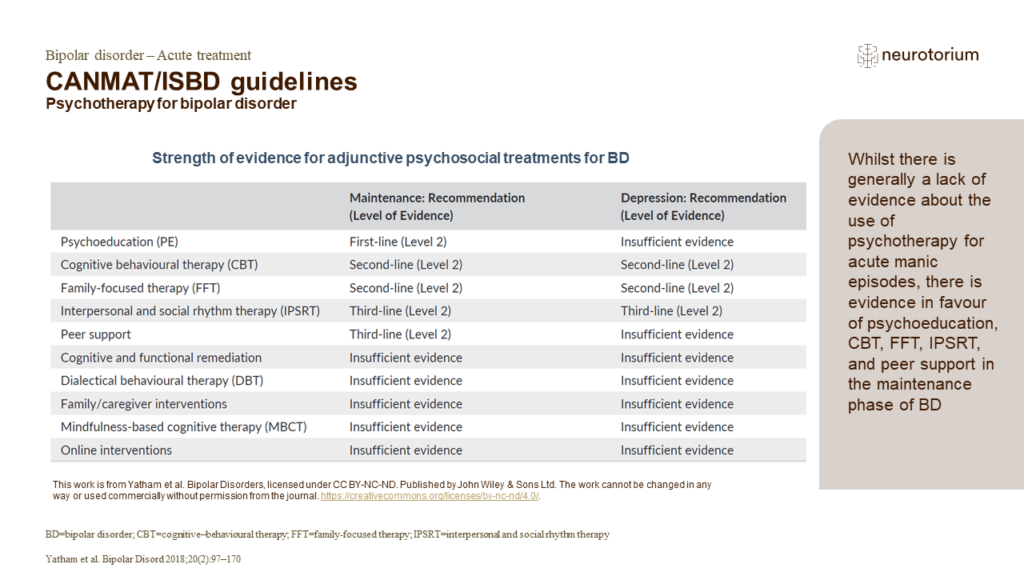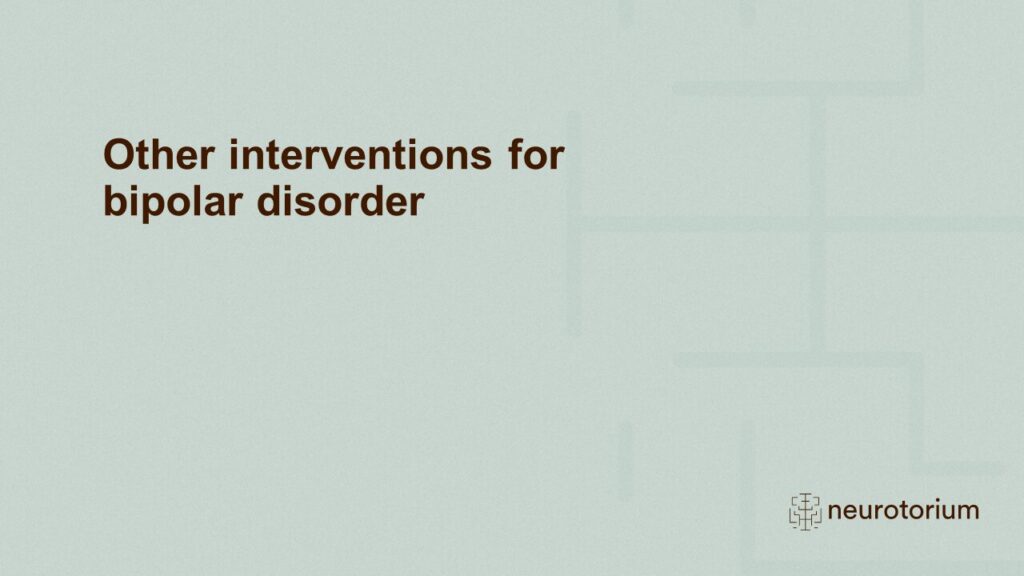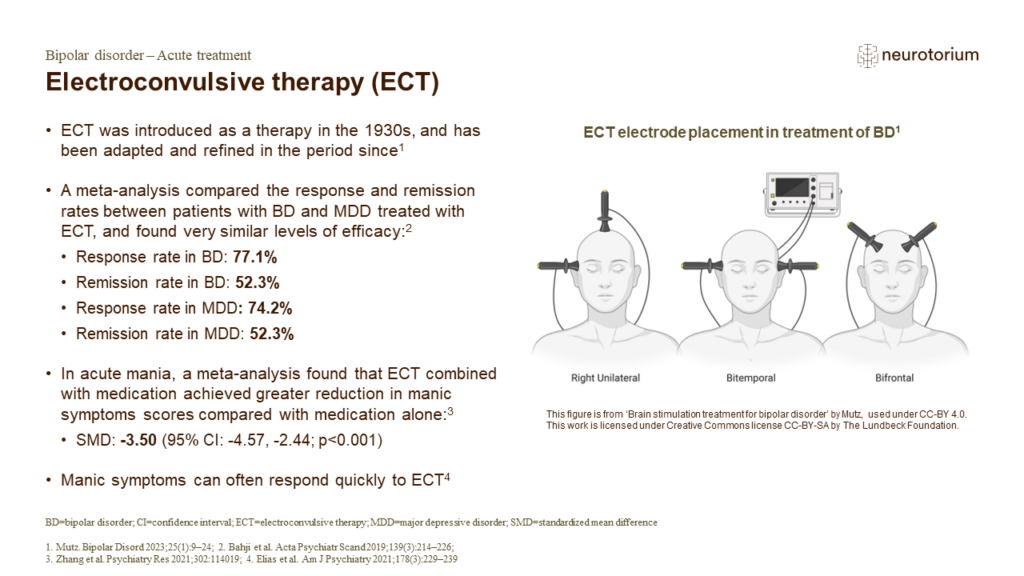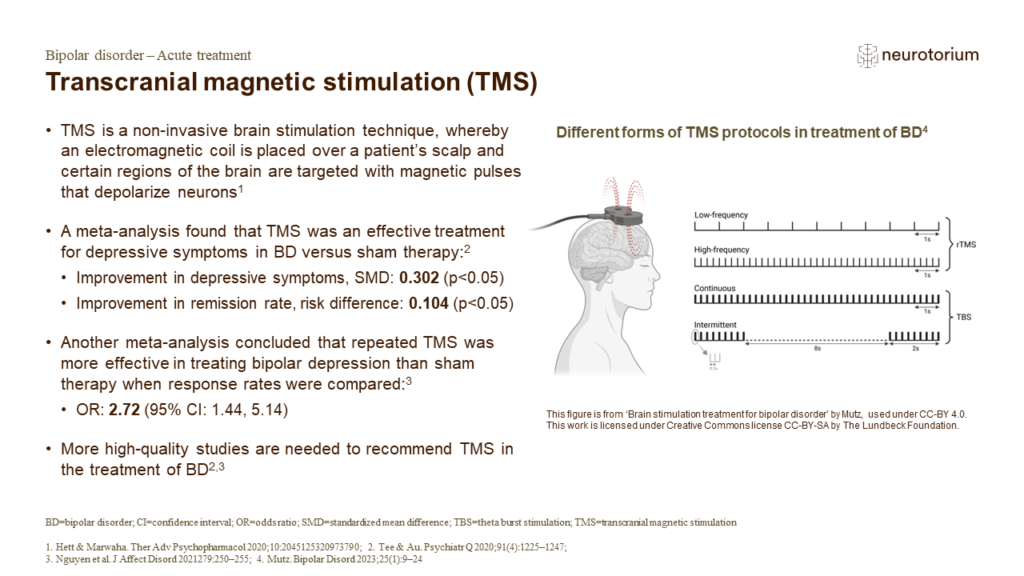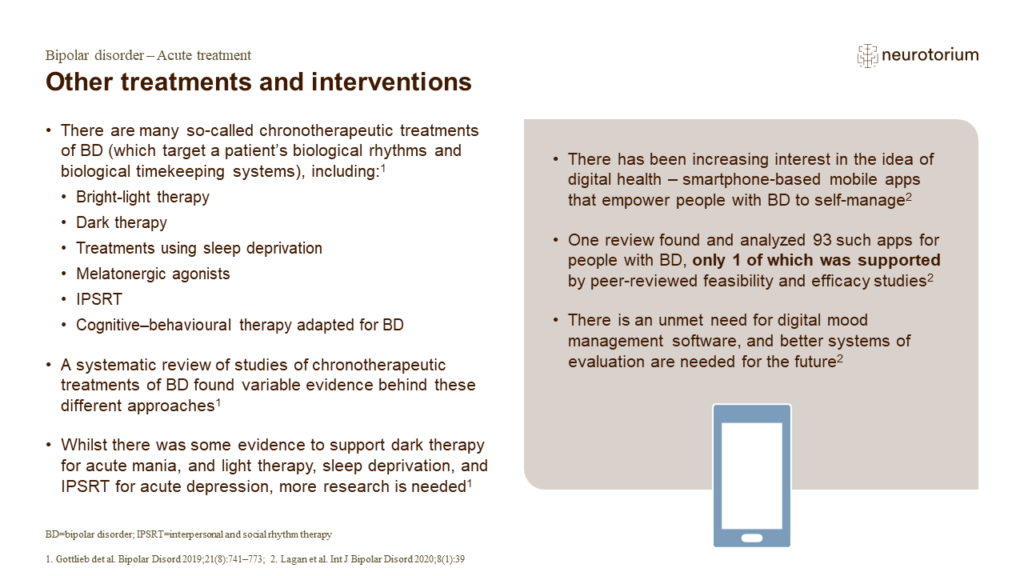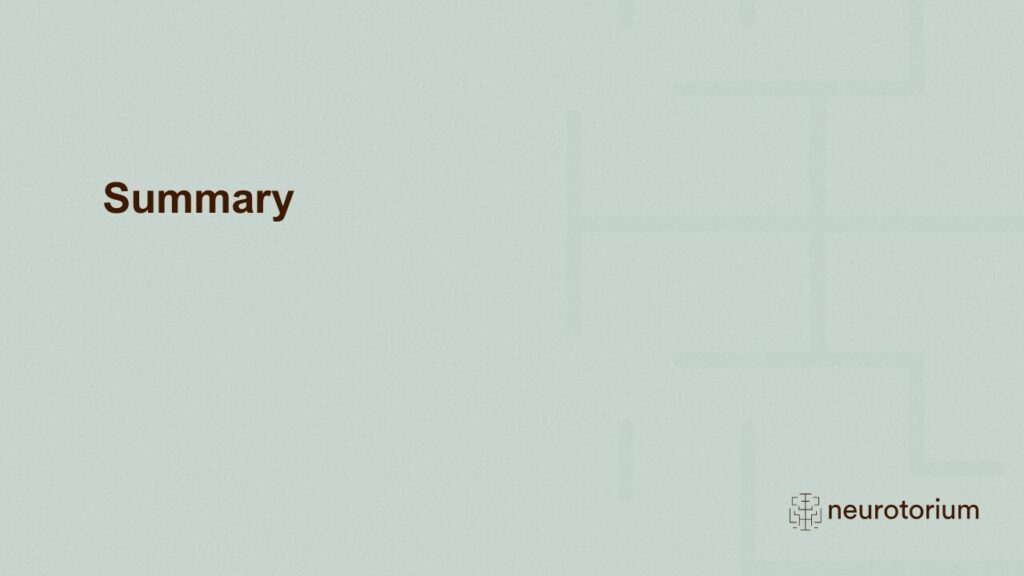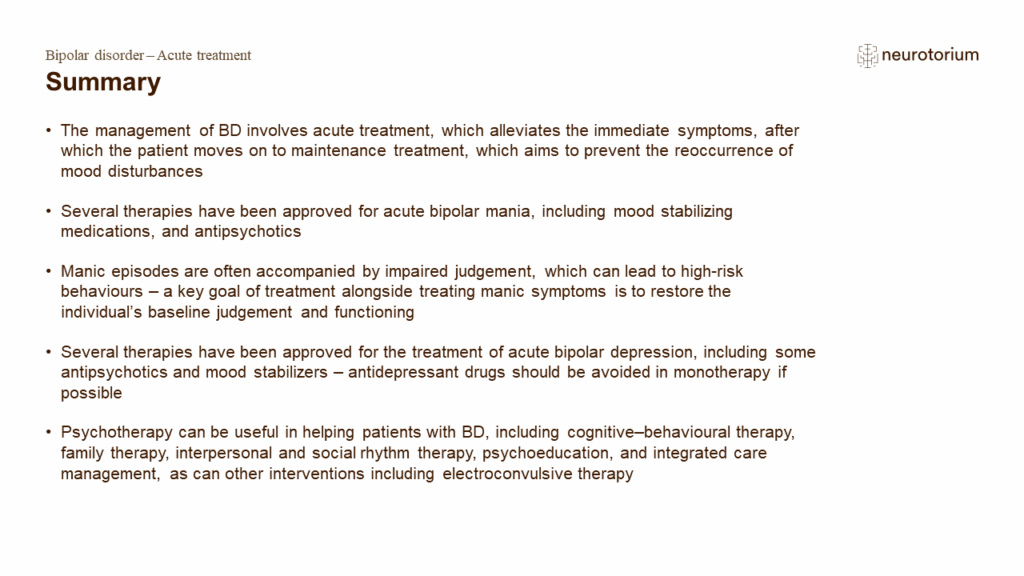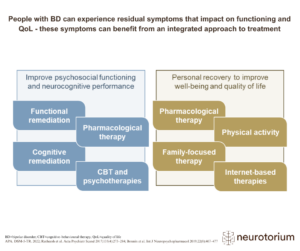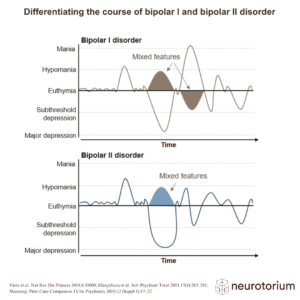Index for
slide deck
Introduction
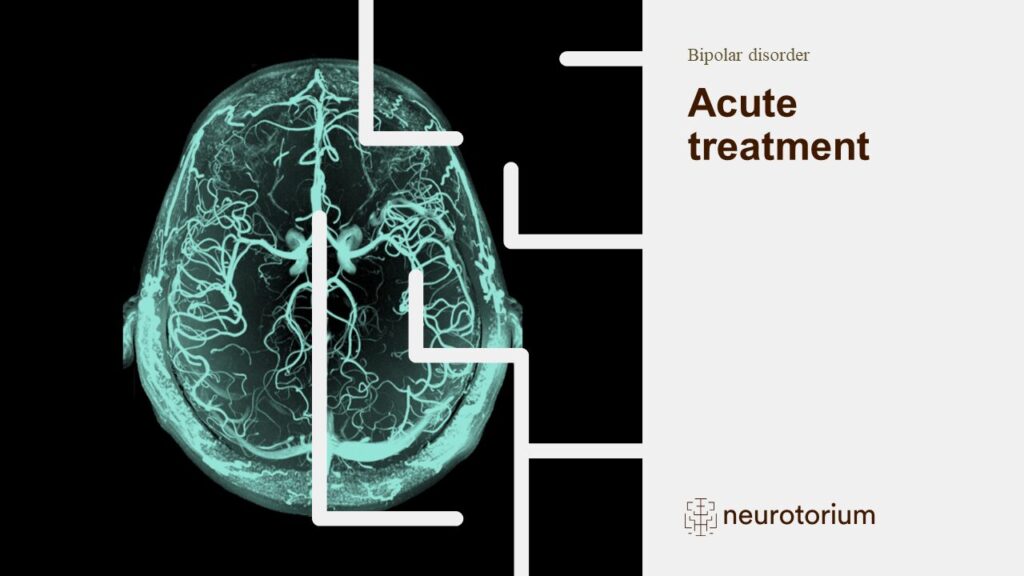
Acute treatment
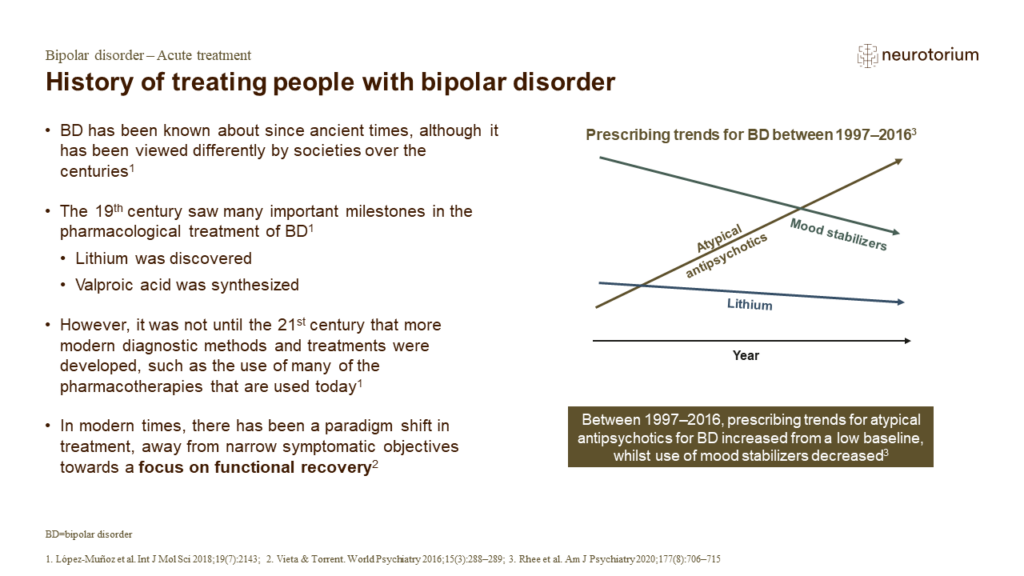
History of treating people with bipolar disorder
Prescribing trends have changed over the last few decades, as shown on the slide.3 An analysis using US data shows decreased rates of lithium, and mood stabilizer prescriptions, coupled with an increase in the rates of antipsychotic use – perhaps driven by the increased a…
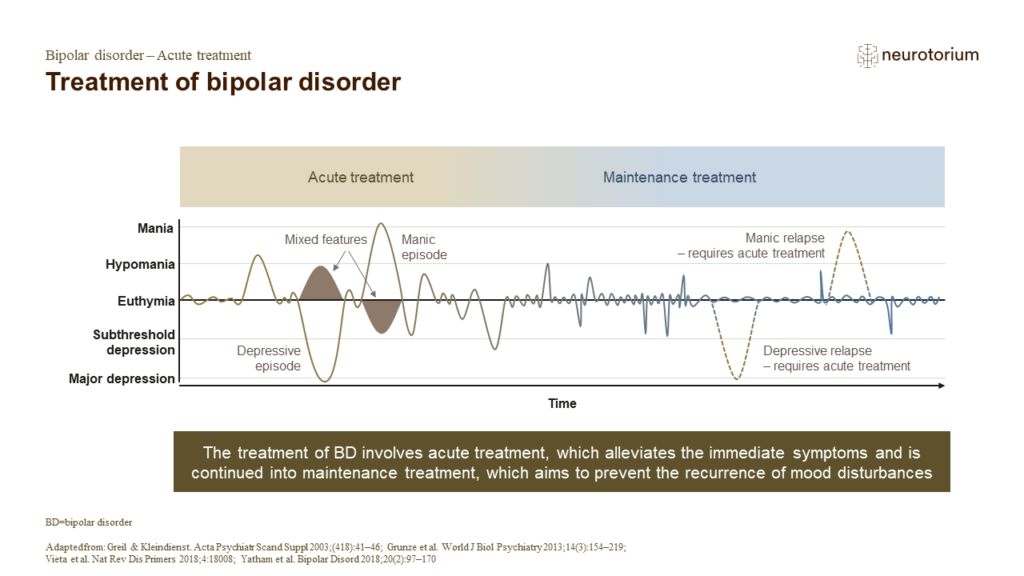
Treatment of bipolar disorder
Bipolar disorder describes a complex group of serious chronic psychiatric disorders.5 Bipolar disorder has a substantial impact on the patient, through impact on functioning and quality of life, and also in terms of morbidity and mortality.5 It is therefore critical that …
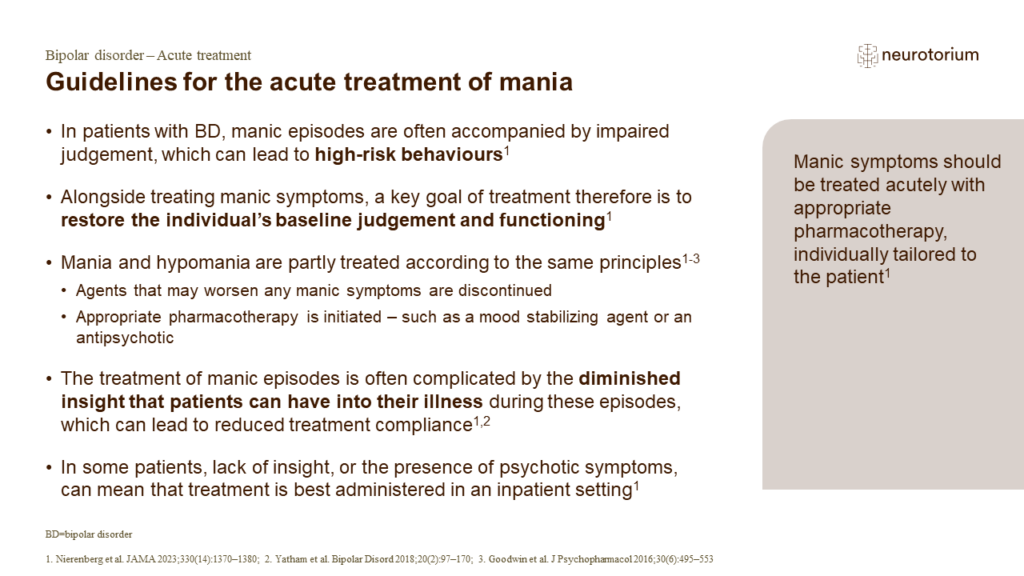
Guidelines for the acute treatment of mania
The treatment goals in bipolar disorder are to reduce the intensity of the current mood episode, and to reduce the severity and reoccurrence of subsequent episodes.1 The standard approach to treatment is with mood stabilizing medications, antipsychotics, and psychotherapy…
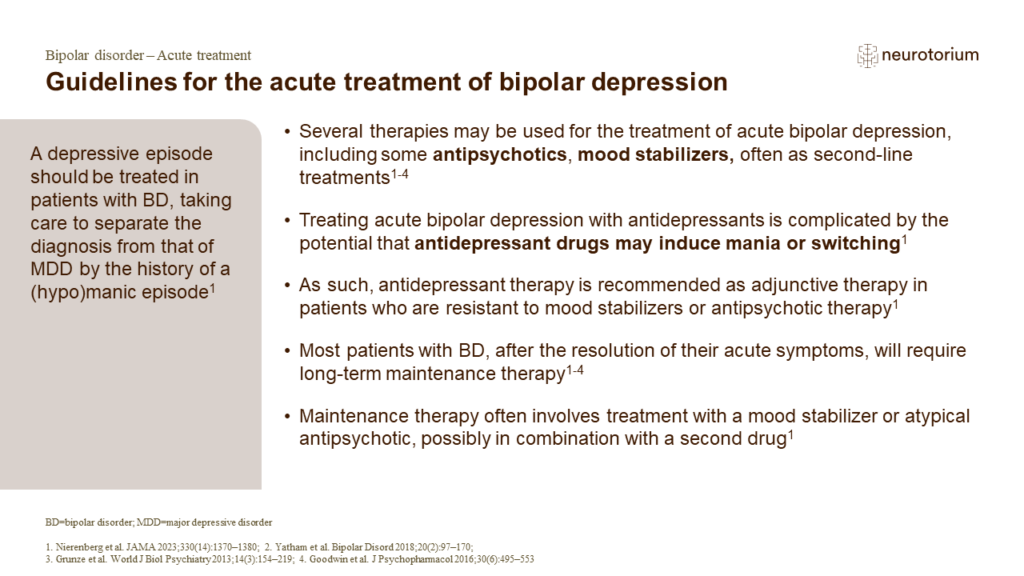
Guidelines for the acute treatment of bipolar depression
A challenge in the acute treatment of a depressive episode in patients with bipolar disorder is differentiating the symptoms from major depressive disorder; key to this differentiation is the presence of a prior (hypo)manic episode.1 The standard approach to treatment is …
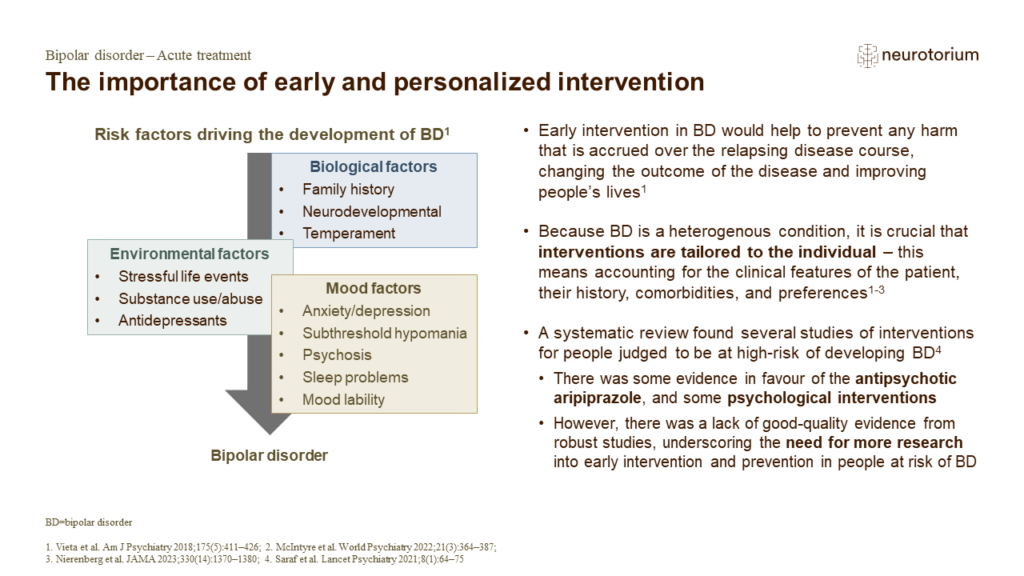
The importance of early and personalized intervention
The idea of early intervention in bipolar disorder is gaining momentum.1 Indeed, the idea of preventing disease progression in a condition that is associated with a substantial burden of morbidity and mortality is a very attractive prospect.1 However, in order to fully re…
Pharmacological interventions for bipolar disorder
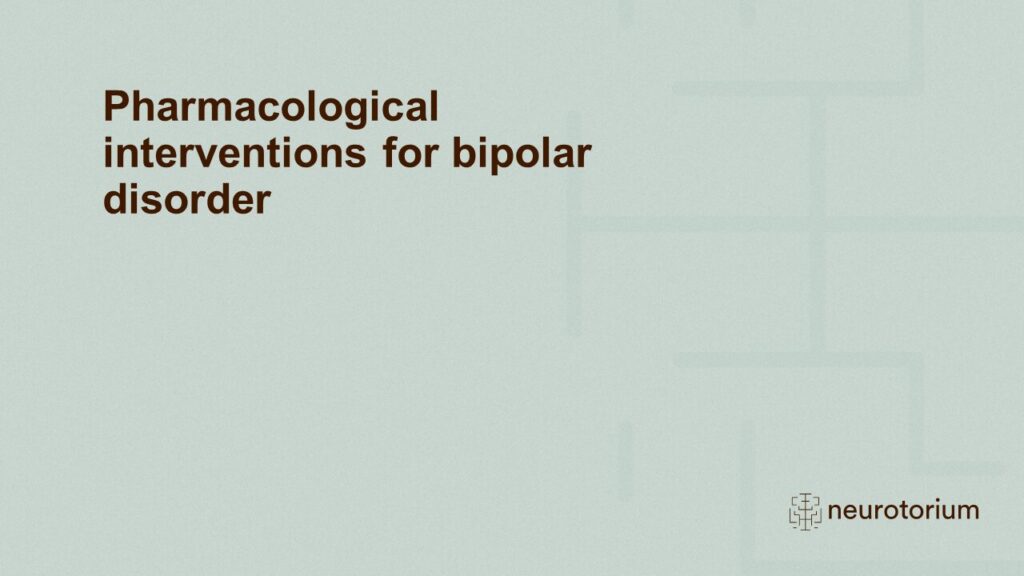
Pharmacological interventions for bipolar disorder
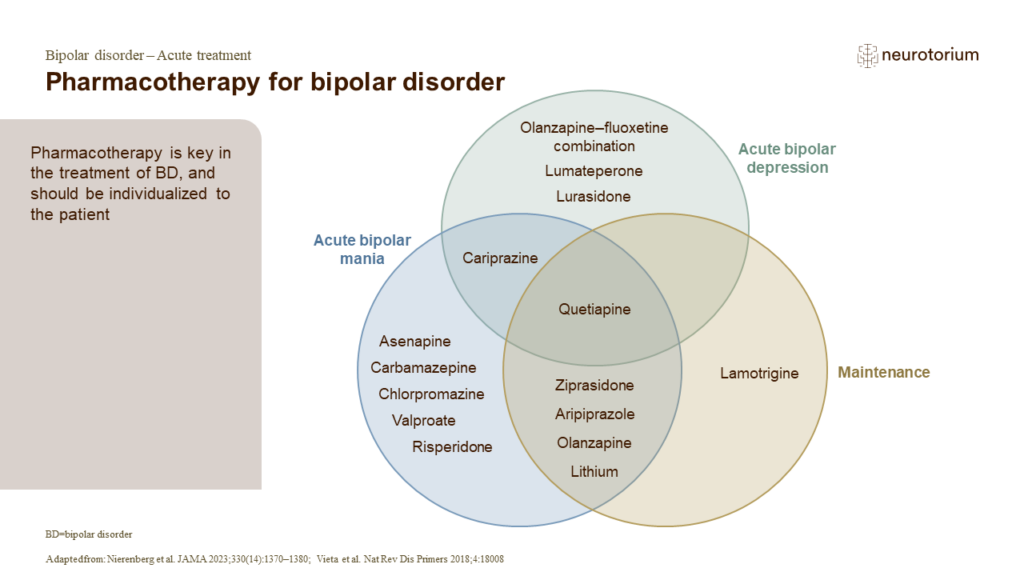
Pharmacotherapy for bipolar disorder
There are many different pharmacotherapies that are used to treat bipolar disorder, including lithium, mood stabilizers, and antipsychotics.1 Generally, the treatment approach to bipolar I disorder is similar to bipolar II disorder, as there are few studies that have inte…
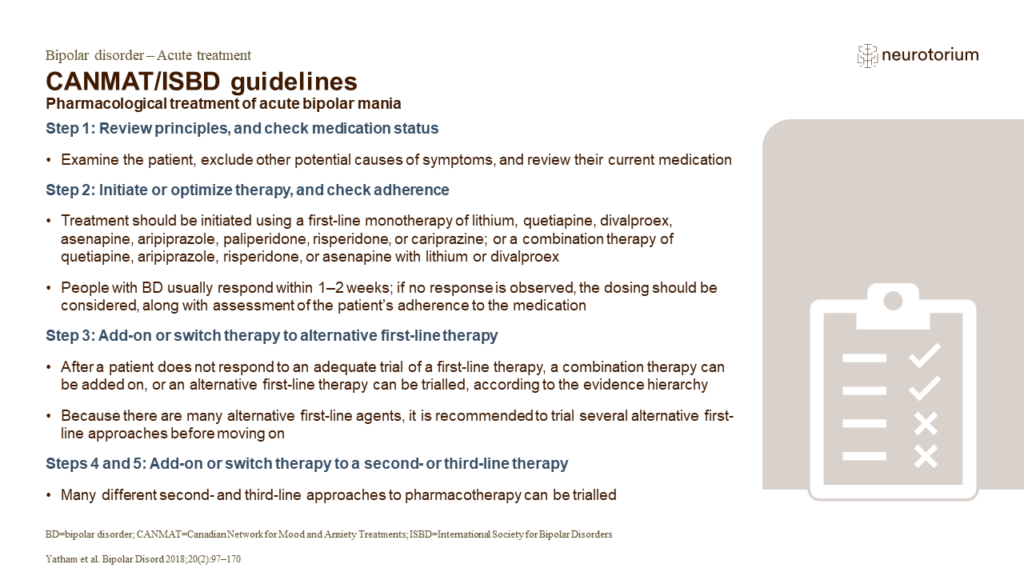
CANMAT/ISBD guidelines - Pharmacological treatment of acute bipolar mania
The Canadian Network for Mood and Anxiety Treatments guidelines for the treatment of bipolar disorder outline a step-wise approach to helping patients with acute mania, including detailing which pharmacotherapies should be attempted as a first-line therapy, before moving …
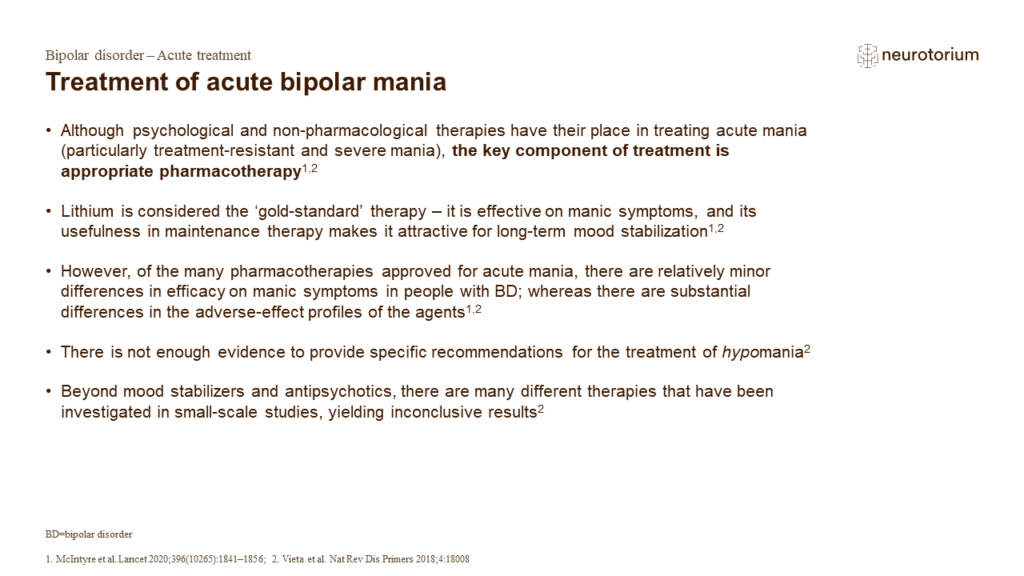
Treatment of acute bipolar mania
Agitation often accompanies manic episodes, and can require specific intervention if severe, or if it persists beyond the resolution of the manic episode.3 Rapid-acting intramuscular or inhaled formulations of antipsychotics can be used first-line to treat agitation, whic…
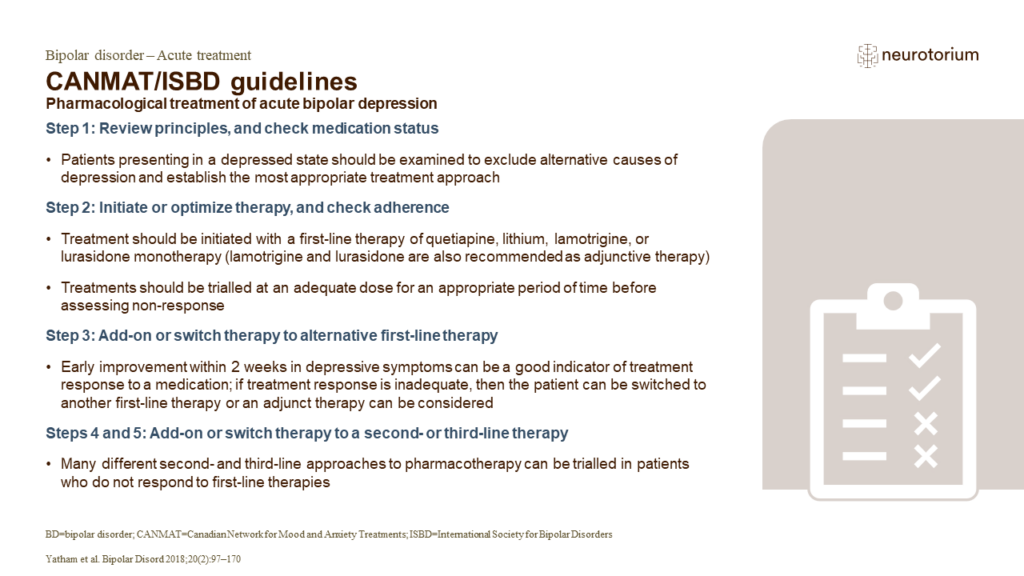
CANMAT/ISBD guidelines - Pharmacological treatment of acute bipolar depression
The Canadian Network for Mood and Anxiety Treatments guidelines for the treatment of bipolar disorder outline a step-wise approach to helping patients with bipolar depression, including detailing which pharmacotherapies should be attempted as a first-line therapy, before …
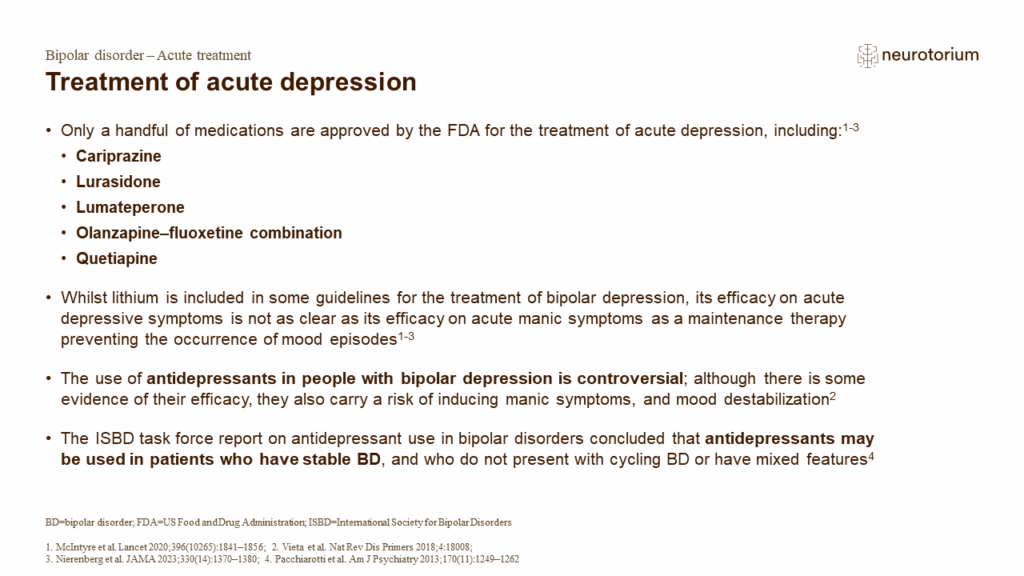
Treatment of acute depression
Because there are relatively few medications indicated for acute bipolar depression, many pharmacotherapies are used off-label.1,2 Beyond pharmacotherapy, there is some evidence in favour of interventions such as electroconvulsive therapy and transcranial magnetic stimula…
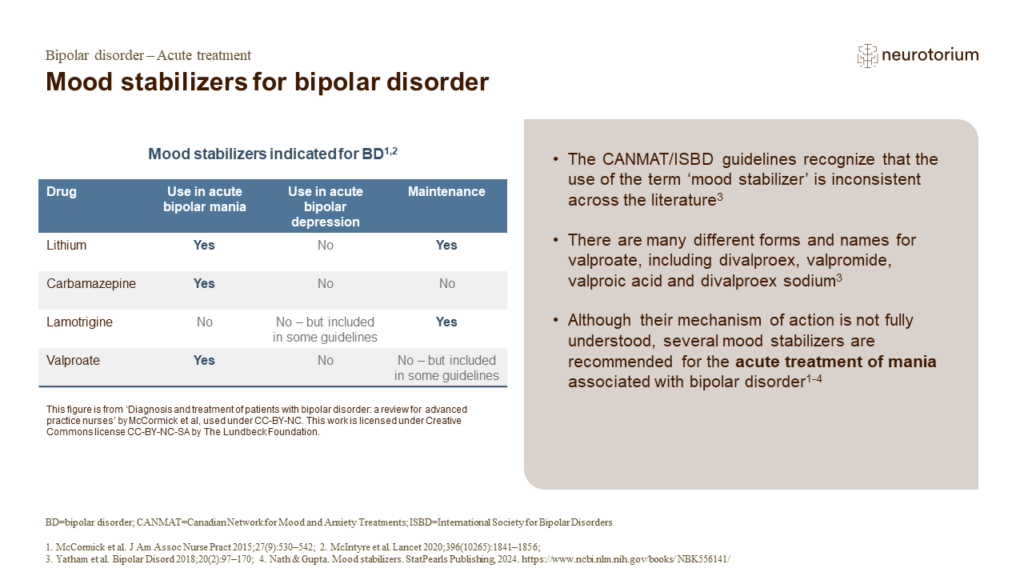
Mood stabilizers for bipolar disorder
The mechanism of action of the mood stabilizing agents discussed on the slide are not entirely understood.4 Mood stabilizing agents may have effects on the inositol uptake process, and can modulate the balance of GABA–glutamate signalling in the brain.4 It is this pharmac…
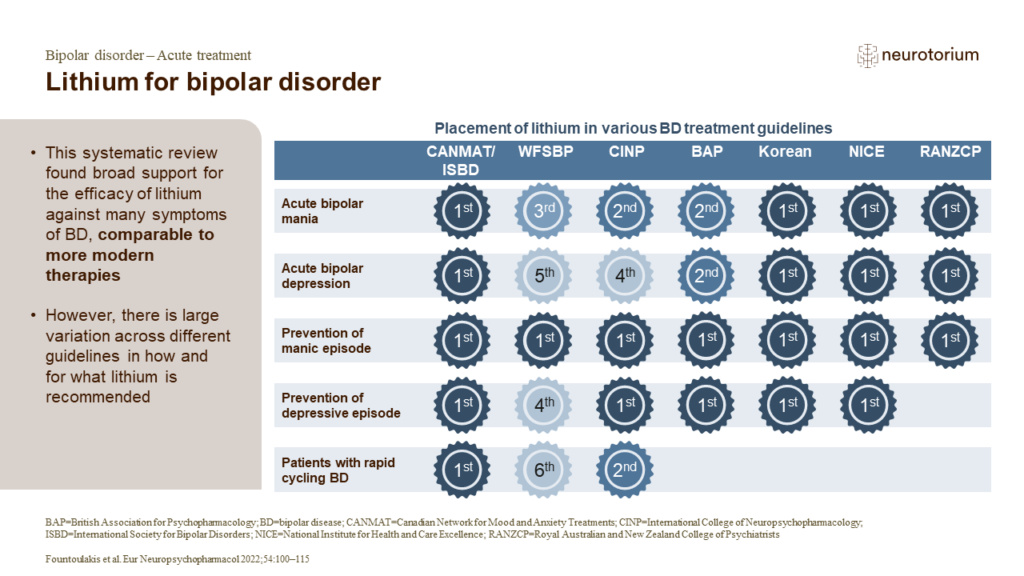
Lithium for bipolar disorder
In more recent times, the prescription of lithium has decreased, partly because studies of lithium efficacy tend to be older studies, which are not as methodologically rigorous as modern clinical trials.2 Therefore, although lithium is an established treatment for bipolar…
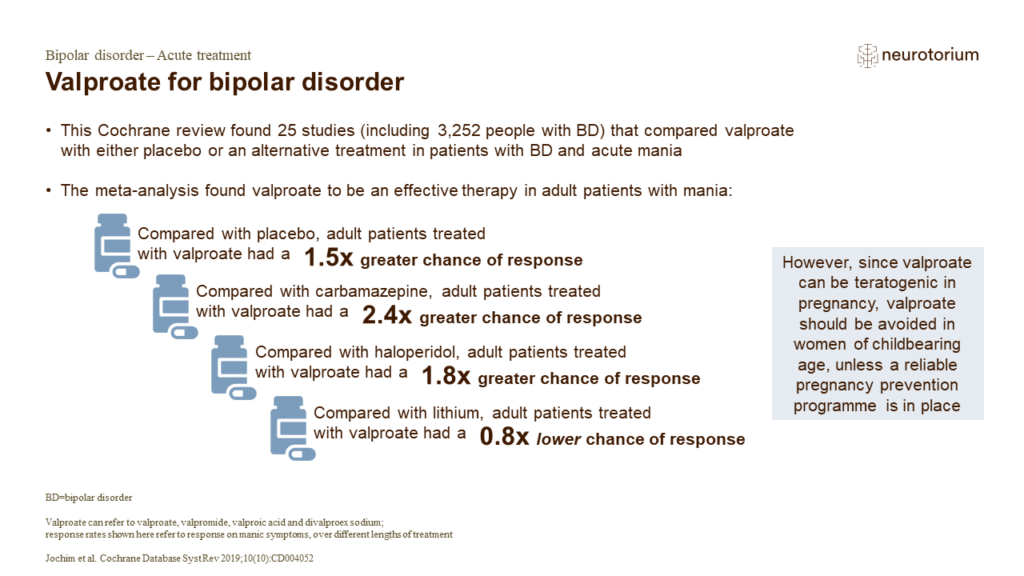
Valproate for bipolar disorder
The slide summarises the evidence that this systematic review and meta-analysis found for the use of valproate in the treatment of acute mania in bipolar disorder in adults.1 The role of valproate was slightly less clear in adolescent patients, partly because of low-quali…
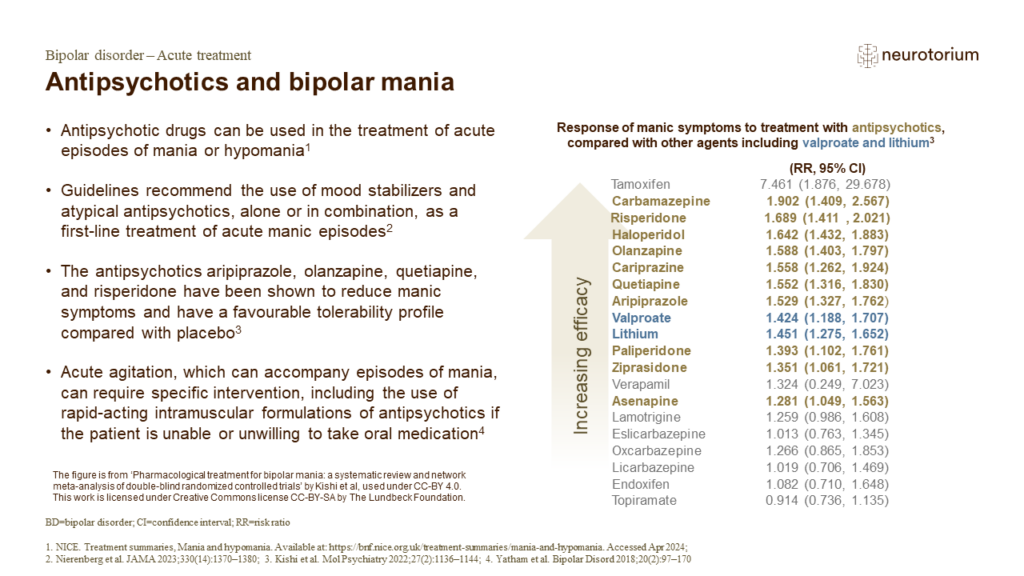
Antipsychotics and bipolar mania
Unlike in the treatment of acute bipolar depression, where the evidence is less straightforward,5,6 there is good evidence in favour of the use of antipsychotics for the treatment of acute mania.1-4
References:
1. NICE. Treatment summaries, Mania and hypomania. Available …
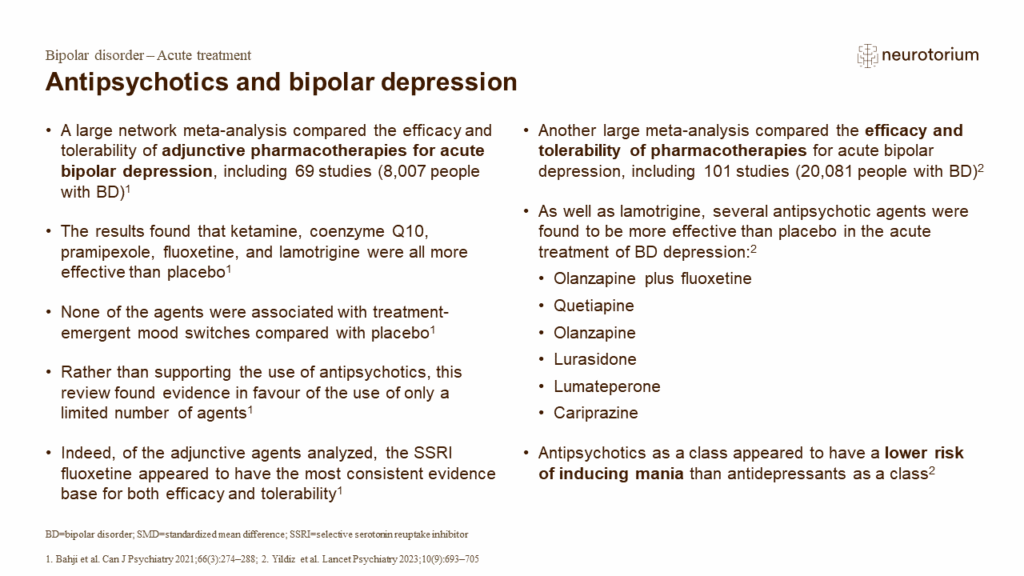
Antipsychotics and bipolar depression
As outlined on the slide, there is some conflicting evidence regarding the use of antipsychotics in the acute treatment of bipolar depression.1,2 However, their use in patients with bipolar mania is broadly supported, and antipsychotics are included in many treatment guid…
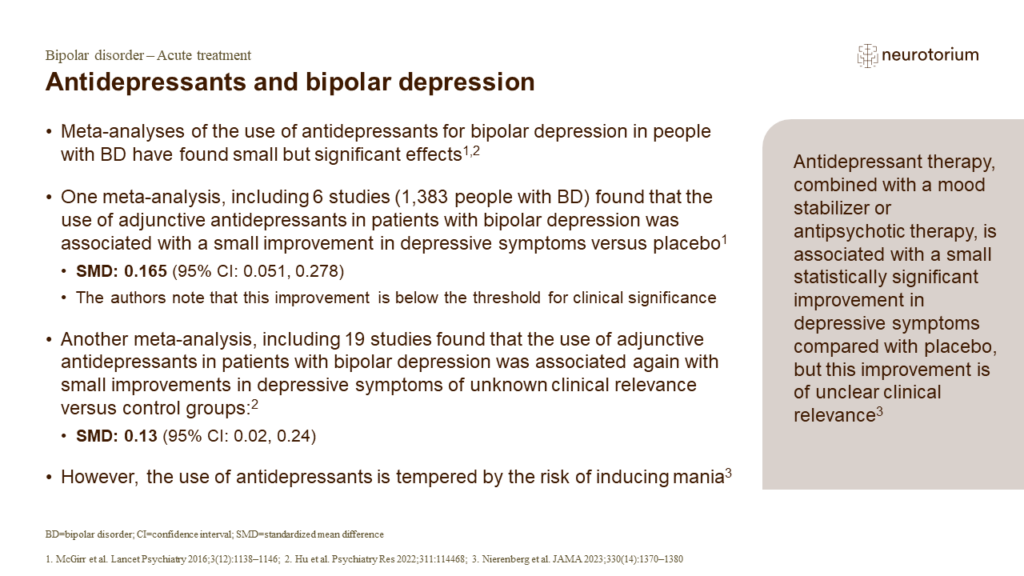
Antidepressants and bipolar depression
The use of antidepressant medication in people with bipolar disorder has been a source of controversy.4 Although widely used, there is poor evidence in favour of antidepressant therapy in bipolar disorder, with few well-designed good-quality studies forming an evidence ba…
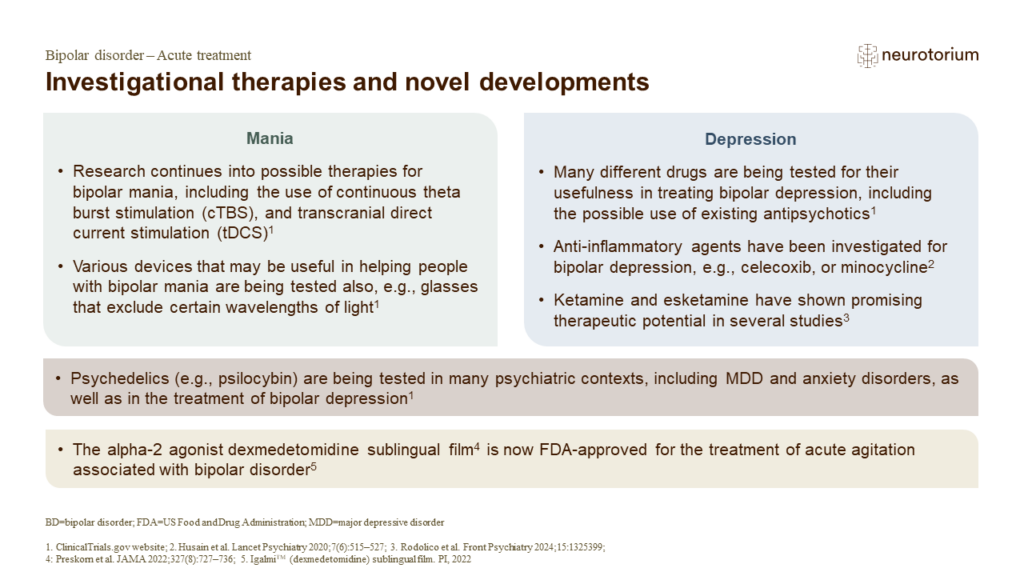
Investigational therapies and novel developments
Many different approaches to treatment are being investigated for use in bipolar disorder.
References:
1. ClinicalTrials.gov website. Available at: www.clinicaltrials.gov. Accessed February 2024.
2. Husain MI, Chaudhry IB, Khoso AB, et al. Minocycline and celecoxib as adj…


